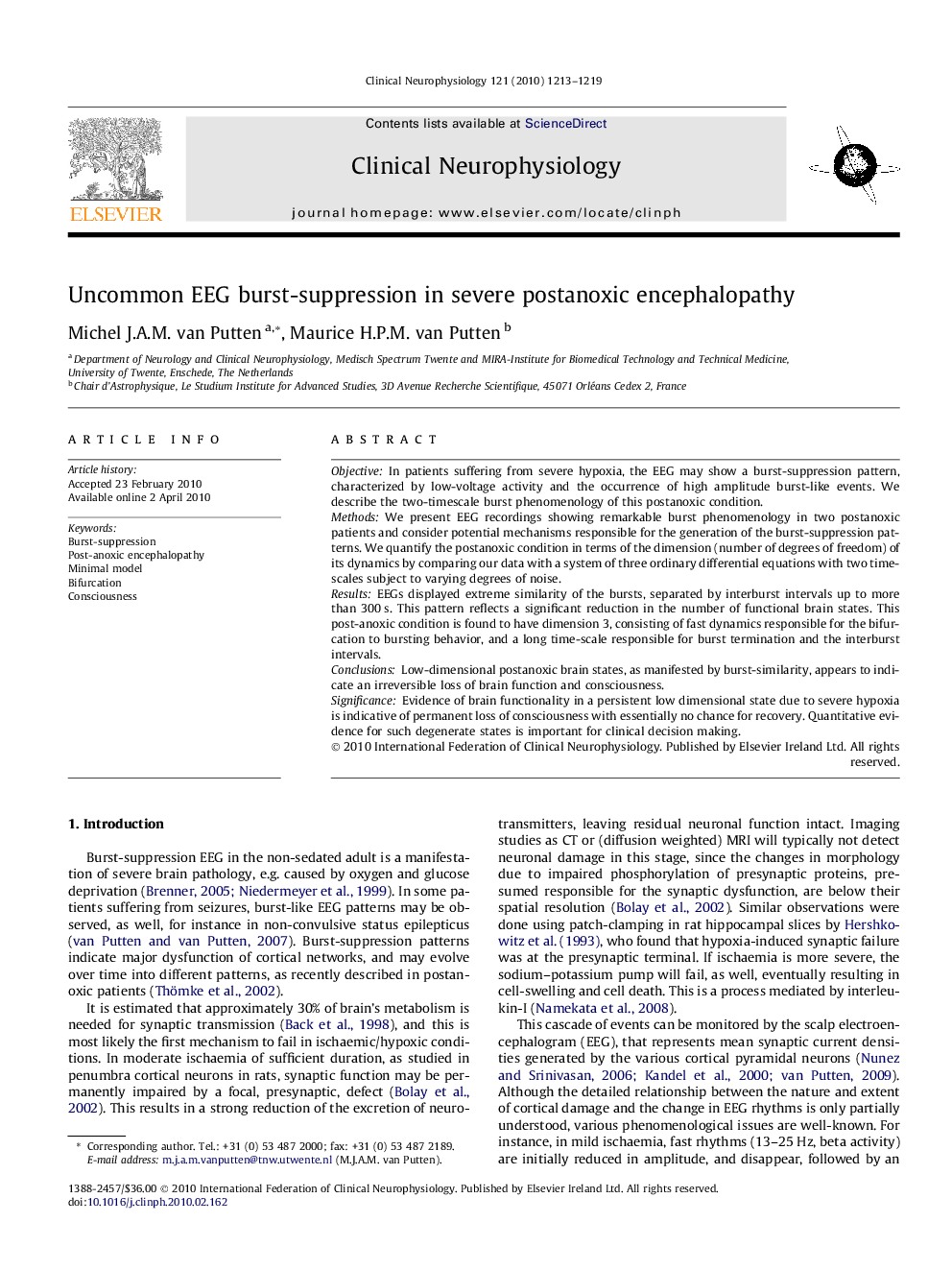| Article ID | Journal | Published Year | Pages | File Type |
|---|---|---|---|---|
| 3044842 | Clinical Neurophysiology | 2010 | 7 Pages |
ObjectiveIn patients suffering from severe hypoxia, the EEG may show a burst-suppression pattern, characterized by low-voltage activity and the occurrence of high amplitude burst-like events. We describe the two-timescale burst phenomenology of this postanoxic condition.MethodsWe present EEG recordings showing remarkable burst phenomenology in two postanoxic patients and consider potential mechanisms responsible for the generation of the burst-suppression patterns. We quantify the postanoxic condition in terms of the dimension (number of degrees of freedom) of its dynamics by comparing our data with a system of three ordinary differential equations with two timescales subject to varying degrees of noise.ResultsEEGs displayed extreme similarity of the bursts, separated by interburst intervals up to more than 300 s. This pattern reflects a significant reduction in the number of functional brain states. This post-anoxic condition is found to have dimension 3, consisting of fast dynamics responsible for the bifurcation to bursting behavior, and a long time-scale responsible for burst termination and the interburst intervals.ConclusionsLow-dimensional postanoxic brain states, as manifested by burst-similarity, appears to indicate an irreversible loss of brain function and consciousness.SignificanceEvidence of brain functionality in a persistent low dimensional state due to severe hypoxia is indicative of permanent loss of consciousness with essentially no chance for recovery. Quantitative evidence for such degenerate states is important for clinical decision making.
